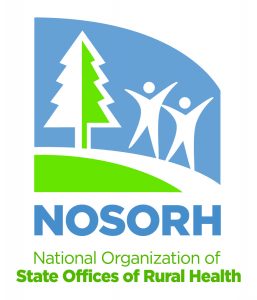The National Institutes of Health (NIH) is seeking volunteers for a clinical trial to test the effectiveness of a vaccine developed to prevent coronavirus disease 2019 (COVID-19). The trial, which will be conducted at U.S. clinical research sites, is expected to enroll approximately 30,000 adult volunteers who do not have COVID-19. Get more information from a Q&A about the phase 3 trial. You can also watch a 30-minute interview with a volunteer from the phase 1 clinical trial, who is joined by NIH Director Francis Collins and Dr. Anthony Fauci. (Note: the video has some tech difficulties in the beginning).
New Reports from Rural Health Advisory Committee
The National Advisory Committee on Rural Health and Human Services convenes twice each year for close examination of issues by a panel of more than 20 experts. The most recent recommendations to the Secretary of HHS come from its March 2020 meeting in Atlanta. They are: HIV Prevention and Treatment Challenges in Rural America, and Maternal and Obstetric Care Challenges in Rural America. Read more about publications here.
New Rural Hot Spots are ICU Bed Deserts, Study Finds
More than half of rural low-income communities in the United States have zero ICU beds, so many hospitals are having to transfer patients to wealthier urban facilities. Using Medicare data, Health Affairs researchers found that nearly 49 percent of all low-income areas did not have ICU beds. This gap exists across rural and urban settings, but it is far worse in rural America. Many hospitals have either converted regular beds to ICU beds or have had to rely on transfers to facilities with more resources. Poorer access to care and higher percentages of chronic health conditions increases the risk posed by COVID-19 in rural America. During a Senate Finance Committee hearing on Thursday, Sen. Ron Wyden (D-OR) warned that problems with supply chains and disparities in access to care in rural areas could further exacerbate racial disparities as well.
HHS Study: Strategies Rural Communities Use to Address Substance Misuse Among Families in The Child Welfare System
The Office for Planning and Evaluation at HHS describes nine programs serving child welfare-involved parents with substance use issues, with a focus on their applicability to rural communities. These programs offered several types of services, including parent mentoring, case management, home visiting, and treatment for opioid use disorders.
HHS Study: Strategies Rural Communities Use to Address Substance Misuse Among Families In The Child Welfare System
The Office for Planning and Evaluation at the U.S. Department of Health & Human Services (HHS) describes nine programs serving child welfare-involved parents with substance use issues, with a particular focus on their applicability to rural communities. These programs offered various types of services, including parent mentoring, case management, home visiting, and treatment for opioid use disorders. Read more here.
Changes in Care-Seeking after Rural Hospitals Merge
Researchers at the North Carolina Rural Health Research and Policy Analysis Center examined 15 rural hospitals to estimate the change in use of inpatient services delivered by acquired rural hospitals following a merger. Read more about the findings here.
New! NOSORH Issue Brief Defining Rural Population Health and Health Equity

New NOSORH issue brief examines the definitions of population health and health equity for rural stakeholders, and offers examples of successful rural strategies.
In recent years, the terms “population health” and “health equity” have often been used interchangeably by some rural stakeholders. This issue brief aims to examine the differences between the two terms, and offers successful examples of rural population health and health equity activities by State Offices of Rural Health (SORH) and their partners. The brief also offers suggestions on how rural health stakeholders can get started in population health and health equity efforts at the state and local levels.
With support from the Federal Office of Rural Health Policy, NOSORH developed this issue brief for SORH and other rural health stakeholders as a means of ensuring unified definitions and approaches to population health and health equity by rural stakeholders.
Looking for more?
Check out the Resources by Topic and Position Statements sections of the NOSORH website.
Loss of Hospital-based Obstetric Services in Rural Counties in the United States, 2004-2018
Access to maternity care in rural US counties has been on the decline in recent years. The purpose of this infographic is to show the loss of hospital-based obstetric services from 2004-2018, and how this differs by county type (micropolitan vs. noncore). Read more here.
How Alabama Lowered Its Infant Mortality Rate
The Milbank Foundation examines the strategy that state officials took to bring Alabama’s rate for infant mortality drop to 7.0 deaths per 1000 live births in 2018. Part of the strategy incorporated a Collaborative Innovation Improvement Network supported by the Maternal and Child Health Bureau at the Health Resources and Services Administration. Read more here.
PCORI Research on Rural Transitions from Hospital to Home
The Patient-Centered Outcomes Research Institute (PCORI) is a non-profit organization that funds projects that inpatients and other healthcare stakeholders throughout the research process. Patients, doctors, and hospital staff from rural Montana helped design this study comparing standard hospital transition support with a new program. Read more here. Watch a brief video from PCORI on the importance of including rural populations in research.
